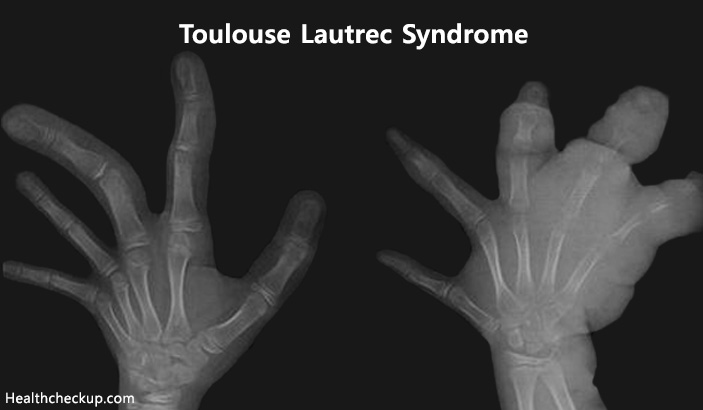Pycnodysostosis gets its name from a famous 19th century french artist. The disease was given the name Pycnodysostosis from the Greek word ‘Pyknos’ which denotes density and ‘Dystosis’ which refers to the unusual bone formation.
Physicians Lamy and Maroteaux are credited with the discovery of the disease in 1962. Andren et al also described the condition in 1962 independently. In older medical texts, you might find Toulouse Lautrec Syndrome referred to as Pyknodysostosis.
What is Toulouse Lautrec Syndrome?
Pyknodysostosis is an inherited disease that affects the bones and their formation. It is passed genetically from parent to child. Patterns of the syndrome’s appearance follow typical rules of genetic inheritance. Medical texts describe Pycnodysostosis as Osteoporosis Acro Osteolytic. It is further noted as a recessive bone dysplasia.
The exact frequency of this inherited genetic disorder has not been established. It is largely classified in a large group. In the group are many uncommon diseases, Pycnodysostosis is at best given an estimate of affecting only one individual out of every 1.7 million persons. In medical literature, only 200 cases of this rare genetic disorder have been described.
[Read – What Is Bone Density Test]
Toulouse Lautrec Syndrome Causes
The cause of Pycnodysostosis is a mutation in an important gene. The gene codes for enzyme Cathepsin K. Cathepsin K is involved in the remodelling process of bones. With this mutation present in your genes, your bones become abnormally dense. It makes your bones brittle. Abnormal bone density when you have Pycnodysostosis delays normal closure of skull bones. This is noted in infancy.
Toulouse Lautrec Syndrome Symptoms (Signs)
The symptom that your doctor looks for to diagnose Toulouse Lautrec syndrome is Osteosclerosis. Brittleness of the bones and short stature are the other major symptoms of this inherited syndrome. There are other symptoms that might point you to suspecting pycnodysostosis in a child. The disease is best identified early and managed using medical tools. These symptoms include
- The irregular arrangement of your teeth
- A delay or slowness in the appearance of teeth
- Permanent teeth not appearing at all (Hypodontia)
- A narrow grooved palate
- Short Stature
- A prominent front and back of the head
- A midface that is not as full as it should usually be
- Grooved flat nails
- The fingers having the skin covering their back wrinkled
[Read – Bone Scan Side Effects]
Diagnosis of Toulouse Lautrec Syndrome
Diagnosis of Pycnodysostosis is often done in infancy. Due to its rarity, the disease can be missed for some time. A physical exam must be done and run against the results of laboratory tests and medical history. Genetic testing is done on the CTSK gene. The test is a test that is rarely carried out. In the unlikely case of diagnosis, you will need a team of specialists to manage Toulouse Lautrec syndrome.
Toulouse Lautrec Syndrome Treatment
Treatment for Toulouse Lautrec syndrome will have to factor in Hormonal Treatment. It is a condition that will require the input of a pediatrician and a bone specialist. A surgeon might be required too. Care can be coordinated by your primary care physician.
Life Expectancy of A Person with TLS
The Life expectancy of a person with TLS is generally average and good. Life expectancy in people with Pycnodysostosis is normal with the proper diagnosis. Medicine is continually working on how to get a cure for Toulouse Lautrec Syndrome. Get the best medical attention that you can for Toulouse Lautrec syndrome once it is diagnosed.
- A lifestyle change might be necessary for the successful management of Pycnodysostosis.
- Promising research points towards manipulating the specific gene in how it functions.
- A technique called CRISPR has fixed mutation in the DNA. Without hypertrophic cardiomyopathy happening, there is less chance of cardiac death or heart failure. A gene editing tool is used in this technique.
Pycnodysostosis radiology uses imaging to find the narrowing of medullar cavities. It is the confirmatory test for Osteosclerosis. Ask a Doctor to guide you in the process of diagnosing and managing Pycnodysostosis.
Medically Reviewed By

Professionally, a trained Microbiologist and Plant operator, Eustace is an experienced health content writer who is passionate about helping people lead a healthy life.









